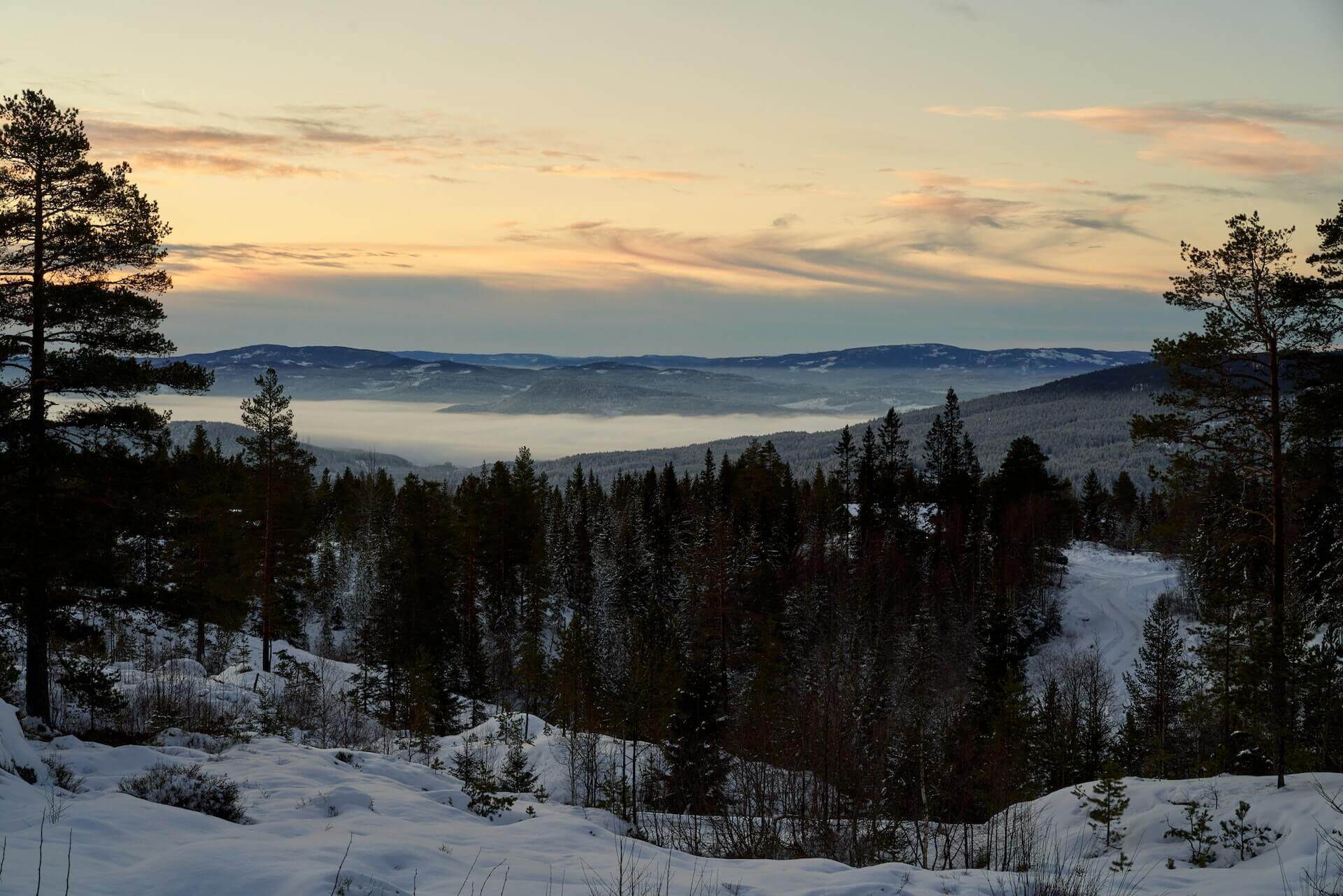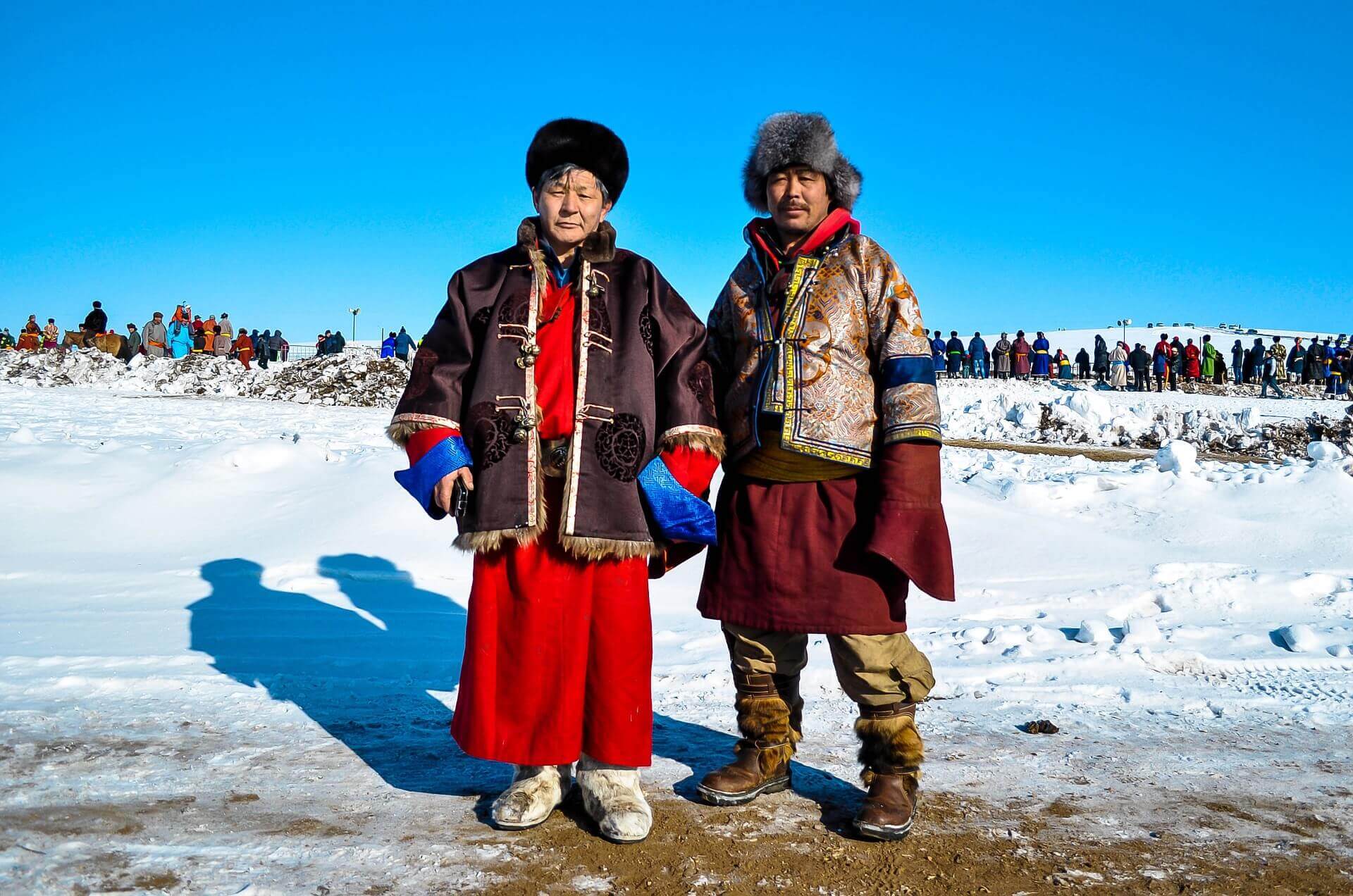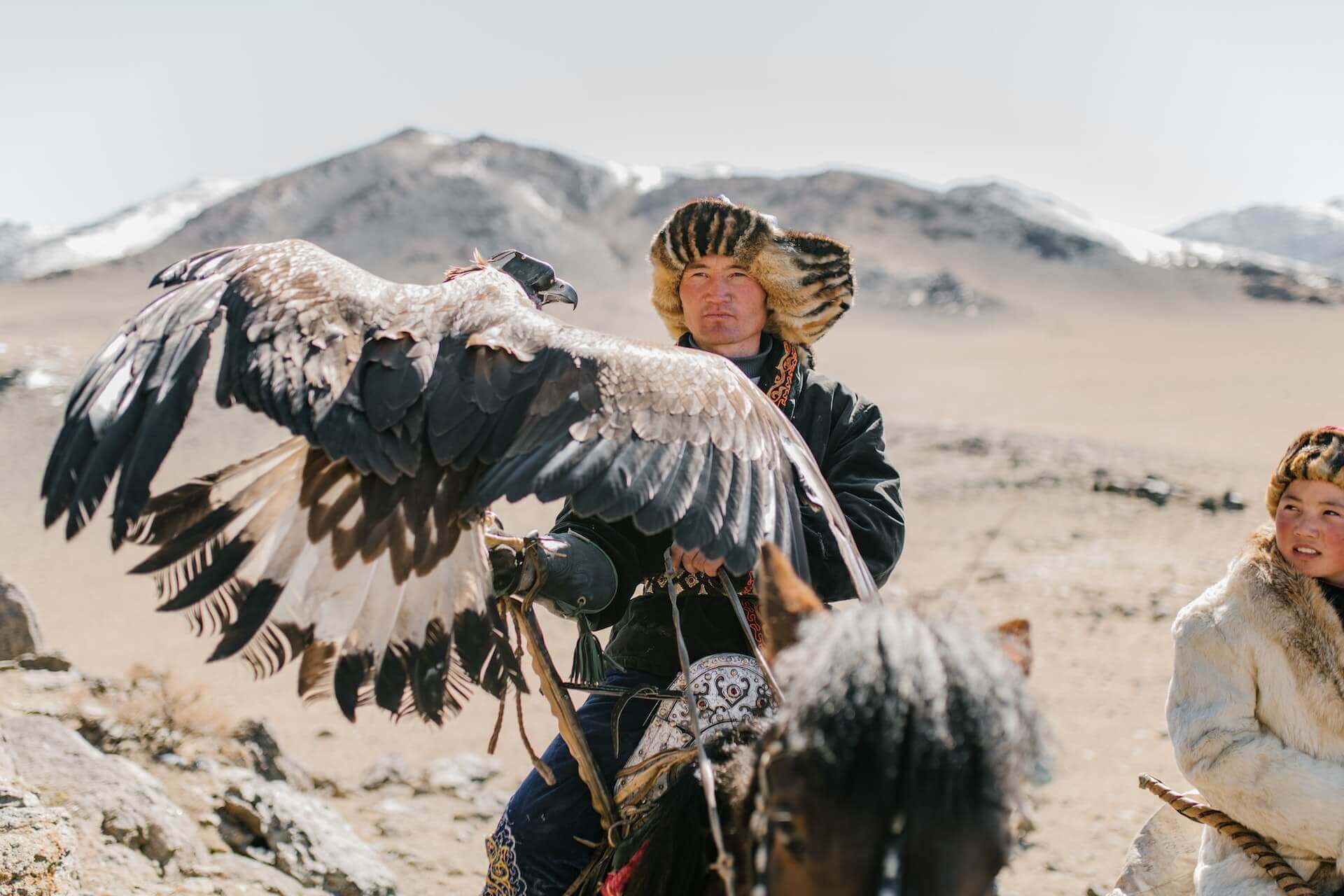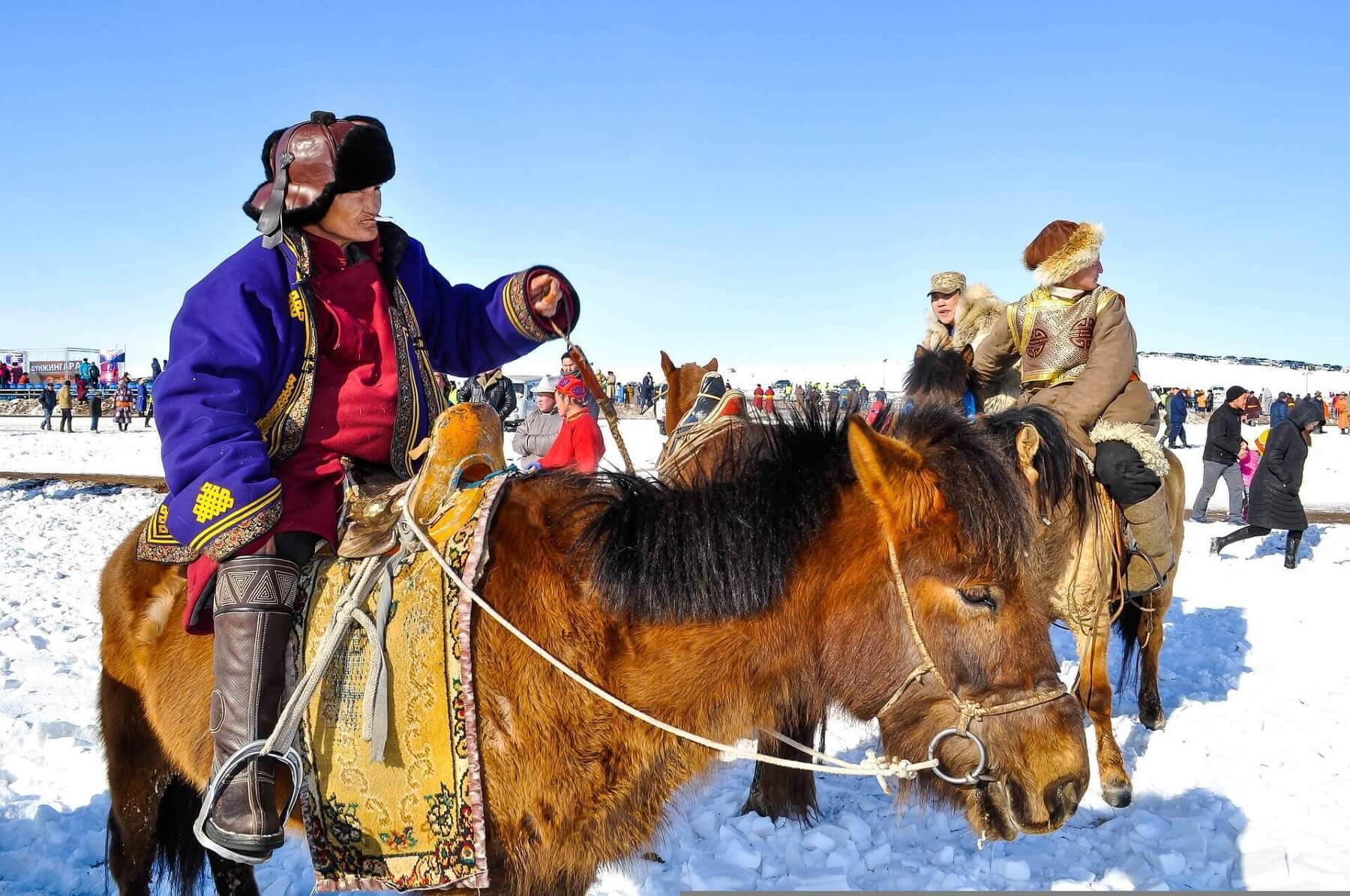Mongolian winters are long, cold, and harsh. The average temperature in January is -30 degrees Celsius (-22 degrees Fahrenheit), and it can sometimes drop as low as -60 degrees Celsius (-76 degrees Fahrenheit).
Despite the extreme cold, Mongolians have to keep going about their daily lives. They travel by horse and camel, herd their animals, and even go to school in the winter.

Mongolian winters are a time for family and friends to get together, drink tea, and eat Banshtai Tsai (a type of Mongolian food with dumpling in milk tea). However, it’s also a time to be cautious. Frostbite is a genuine threat, and exposure to the cold can result in death.
As a result, Mongolians dress warmly and protect themselves from the cold by remaining indoors when the weather is at its worst. So here are few interesting facts you should know about Mongolian Winter.
#Fact1 Mongolian winter temperature
Winter in Mongolia can be as cold as -20°C to -45°C, but there is beauty hidden behind it. Mongolia is the home to the most incredible winter landscapes for those who are prepared.

Ulaanbaatar – World’s Coldest Capital City
Did you know that Ulaanbaatar is the world’s coldest capital city? The lowest temperatures recorded in Ulaanbaatar was -47.7°C on February 19th, 1947.
But usually , the coldest months are January and February when the average temperature is -30°C. But with warm clothes , it is nothing Mongolians can not handle it.
#Fact #2 Mongolian winter clothing
The most essential thing in the winter is, without a doubt, warm clothing. Mongolians have their own traditional winter clothing which is designed to protect them from the cold weather.

Deel is the Mongolian national dress which is often worn in ceremonies and celebrations. It is made of wool and has long sleeves and a high collar to keep the wearer warm.
In the countryside, you will see a lot of Mongolian nomads wearing Deel. But not so much in the city, as the city folks prefers wearing big winter coats, cashmere scarfs and felt boots.
Mongolia is the world’s top cashmere producer, producing over a third of the globe’s cashmere. There are nearly 20 million goats (nearly 7 times the population of Mongolia) in our nation, and we produce around 9,000 tonnes of cashmere each year.
Given its low cost, many Mongolians wear it as part of their everyday attire. It is also a necessary item during wintertime.
# Fact 3 Mongolian Traditional Winter Schedule
The winter in Mongolia culturally begins on the winter solstice, the shortest day of the year – December 22. The winter months are divided into 9 days, consisting of 9 batches. With each 9 day that passes, it gets colder until the weather eventually becomes warmer again.
It’s believed that when these 81 days passes, the seasons will begin to change, and spring will arrive. Here’s the breakdown of the 9 Nines:
- The First Nine: Milk vodka congeals and freezes
- The Second Nine: Vodka congeals and freezes
- The Third Nine: Tail of a three-year-old ox freezes
- The Fourth Nine: Horns of a four-year-old ox freezes
- The Fifth Nine: Boiled rice no longer congeals and freezes
- The Sixth Nine: Roads become visible from under the snow and ice
- The Seventh Nine: Hilltops appear
- The Eighth Nine: Ground becomes damp
- The Ninth Nine: Warmer days set in
Hundreds of years ago, when herding families didn’t have access to clocks and calendars, the nine sets of nine days were established. It’s based on the lunar calendar.
# Fact 4 Mongolia Winter Tours Destinations
Although most people choose to travel to Mongolia during the warmer months, wintertime is extraordinarily stunning, with the steppe and Siberian borderlands blanketed in snow and frost.

Mongolia is often thought to be an unvisitable country because of its cold winters, however the Mongolian winter opens up a variety of opportunities that aren’t as present during other times of the year. These include lower prices for accommodation and tours, while also being virtually empty of tourists.
But even in winter, there is plenty of things you can do in Mongolia.
- Ice festival on northern Huvsgul Lake – where you can see wonderful ice sculptures, reindeer or dog sledding, visiting eagle hunters
- Thousand Camel Festival in the Mongolian Gobi Desert – where we celebrate the qualities of the bactrian camel
- Eagle Hunting Festival – where the Kazakh people in the Western Mongolia holds this festival to teach their heritage and traditions to the younger generation.
- Gorkhi-Terelj National Park is a winter wonderland that’s located just two hours from Ulaanbaatar. The park boasts several natural sights, such as Turtle Rock – a turtle-shaped rock formation that stands out against the brilliant blue sky and rocky mountain range beyond.
- Mongolian winter horse tour – If you want to be daring, go horseback riding in the Orkhon Valley, Bayan Gobi dunes, and Hustai National Park for Przewalski wild horse.

In addition, winter excursions provide a great opportunity to participate in the celebration of Tsagaan Sar (Lunar New Year) and its unique traditions. Because these activities are run by locals and not popular sightseeing spots, they are more personal and enjoyable. In every sense, it’s a cultural journey of a lifetime.
Frequently Asked Questions
How do Mongolians survive winter?
Mongolians have a few tricks up their sleeves when it comes to surviving the cold. One is using airag, or fermented mare’s milk, as a form of antifreeze. Another is wearing many layers of clothing.
What do Mongolians wear in winter?
Mongolians wear a lot of layers in winter, including a deel, which is a traditional Mongolian garment. The deel is made of thick wool and covers the entire body, keeping Mongolians warm in even the coldest weather.
How cold is Mongolia in winter?
Mongolia is one of the coldest countries in the world. Winter in Mongolia can be as cold as -20°C to -45°C.
Why is it so cold in Mongolia?
Mongolia is so cold because it’s located in the central Asia. It’s a landlocked country, which means that there are no oceans to moderate the temperature.
What do Mongolians eat in Winter?
Mongolians eat a lot of stews and soups in winter. They also eat a lot of meat and dairy, which helps them stay warm.
What is there to do in Mongolian in Winter?
Even though it’s cold, there are still plenty of things to do in Mongolia in winter. You can go ice fishing, visit an ice festival, go dog sledding, or even horseback riding.
Is Mongolia cold climate?
Mongolia has a continental climate, which means that it has large temperature variations between winter and summer. The average winter temperature is -20°C to -45°C, while the average summer temperature is 20°C to 30°C.
How cold does the Mongolian desert get?
The Mongolian desert can get very cold in winter, with temperatures dropping as low as -30°C. However, in summer the temperatures can rise as high as 40°C.
What is the coldest month in Mongolia?
The coldest month in Mongolia is January, when the average temperature is -30°C.
Does it snow in Mongolia?
Yes, it does snow in Mongolia. In fact, Mongolia is one of the snowiest countries in the world. The average snowfall is 1.5 meters per year.
Mongolia weather in summer?
The average summer temperature in Mongolia is 20°C to 30°C. But with global warming recent summers have seen temperatures as high as 40°C.
Does Mongolia have all 4 seasons?
Mongolia does have all 4 seasons. Spring is from March to May, summer is from June to August, autumn is from September to November, and winter is from December to February.
Hello. My name is Anujin. I was born and raised in Ulaanbaatar, the capital city of Mongolia. I am senior writer at CorrectMongolia, where I share the culture , tradition of my country.
If you have questions about Mongolia, don’t hesitate to ask. I’ll be happy to help in any way that I can!
Related Content:
- Mongolian traditional clothes (2023)
- Mongolian Deel Clothing Interesting 5 facts
- Altai Mountains in Mongolia Top 5 Facts
- Mongolian Yurt: The Most 6 Benefits Of Traditional Ger
- Mongolian Yurt For Sale
Share to Public
